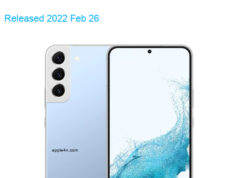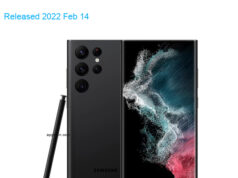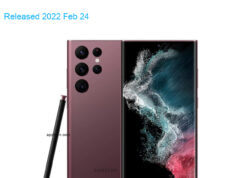| Brand | Xiaomi |
| Model | Redmi K70E 5G Standard Edition Dual SIM TD-LTE CN 256GB 2311DRK48C |
| Released | 2023 Nov |
| Announced | 2023 Nov 29 |
| Hardware Designer | Xiaomi |
| Codename | Xiaomi Duchamp |
| General Extras | Haptic touch feedback , Tactile touch feedback |
| Device Category | Smartphone |
| Width | 74.34 mm |
| Height | 160.45 mm |
| Depth | 8.05 mm |
| Dimensions | 2.93×6.32×0.32 inches |
| Mass | 198 g |
| Platform | Android |
| Operating System | Google Android 14 (Upside Down Cake) |
| Software Extras | Voice Command , Business card recognition , Navigation software , Augmented Reality (AR) , Intelligent personal assistant , Voice Recognition , Face Recognition |
| CPU Clock | 3350 MHz |
| CPU | MediaTek Dimensity 8300-Ultra MT6897, 2023, 64 bit, octa-core, 4096 Kbyte L3, 4 nm, ARM Mali-G615 GPU |
| RAM Type | LPDDR5X SDRAM |
| RAM Capacity (converted) | 12 GiB RAM |
| Non-volatile Memory Interface | UFS 4.0 |
| Non-volatile Memory Capacity (converted) | 256 GB ROM |
| Display Hole | 1-hole |
| Display Diagonal | 169.4 mm |
| Resolution | 1220×2712 |
| Horizontal Full Bezel Width | 4.84 mm |
| Display Area Utilization | 90.0% |
| Pixel Density | 446 PPI |
| Display Type | AM-OLED display |
| Number of Display Scales | 1073.7M |
| Display Refresh Rate | 120 Hz |
| Scratch Resistant Screen | Yes |
| Graphical Controller | ARM Mali-G615MP6 |
| GPU Clock: | 1400 MHz |
| A/V Out | No |
| Microphone(s) | stereo |
| Loudspeaker(s): | stereo |
| Audio Output: | USB Type-C |
| Supported Cellular Bands | GSM850 , GSM900 , GSM1800 , UMTS2100 (B1) , UMTS1700/2100 (B4) , UMTS850 (B5) , UMTS800 (B6) , UMTS900 (B8) , UMTS800 (B19) , CDMA800 (BC0) , LTE2100 (B1) , LTE1800 (B3) , LTE1700/2100 (B4) , LTE850 (B5) , LTE900 (B8) , LTE800 (B18) , LTE800 (B19) , LTE850 (B26) , LTE700 (B28) , TD-LTE2000 (B34) , TD-LTE2600 (B38) , TD-LTE1900 (B39) , TD-LTE2300 (B40) , TD-LTE2500 (B41) , TD-LTE3500 (B42) , TD-LTE3600 (B48) , LTE1700/2100 (B66) , NR2100 (N1) , NR1800 (N3) , NR850 (N5) , NR900 (N8) , NR700 (N28) , TD-NR2600 (N38) , TD-NR2500 (N41) , NR1700/2100 (N66) , TD-NR3700 (N77) , TD-NR3500 (N78) bands |
| Supported Cellular Data Links | GPRS , GPRS MSC33 , EDGE , UMTS , HSUPA , HSUPA 5.8 , HSDPA , HSPA+ 21.1 , HSPA+ 42.2 , DC-HSDPA 42.2 , cdmaOne , CDMA2000 1x , LTE , LTE 100/50 , LTE 150/50 , LTE 300/50 , LTE 600/50 , LTE 1000/100 , LTE 1200/200 , NR 1500 , NR 2600 , NR 3700 data links |
| SIM Card Slot | Nano-SIM (4FF) |
| Complementary Phone Services | Voice transmission , Voice speaker , Vibrate , Speakerphone , ANC , HD Voice , VoLTE , ViLTE |
| Dual Cellular Network Operation | Dual standby |
| Sec. Supported Cellular Networks: | GSM850 , GSM900 , GSM1800 , UMTS2100 (B1) , UMTS1700/2100 (B4) , UMTS850 (B5) , UMTS800 (B6) , UMTS900 (B8) , UMTS800 (B19) , CDMA800 (BC0) , LTE2100 (B1) , LTE1800 (B3) , LTE1700/2100 (B4) , LTE850 (B5) , LTE900 (B8) , LTE800 (B18) , LTE800 (B19) , LTE850 (B26) , LTE700 (B28) , TD-LTE2000 (B34) , TD-LTE2600 (B38) , TD-LTE1900 (B39) , TD-LTE2300 (B40) , TD-LTE2500 (B41) , TD-LTE3500 (B42) , TD-LTE3600 (B48) , LTE1700/2100 (B66) , NR2100 (N1) , NR1800 (N3) , NR850 (N5) , NR900 (N8) , NR700 (N28) , TD-NR2600 (N38) , TD-NR2500 (N41) , NR1700/2100 (N66) , TD-NR3700 (N77) , TD-NR3500 (N78) |
| Sec. Supported Cellular Data Links: | GPRS , GPRS MSC33 , EDGE , UMTS , HSUPA , HSUPA 5.8 , HSDPA , HSPA+ 21.1 , HSPA+ 42.2 , DC-HSDPA 42.2 , cdmaOne , CDMA2000 1x , LTE , LTE 100/50 , LTE 150/50 , LTE 300/50 , LTE 600/50 , LTE 1000/100 , LTE 1200/200 , NR 1500 , NR 2600 , NR 3700 |
| Sec. SIM Card Slot | Nano-SIM (4FF) |
| Touchscreen Type | Capacitive multi-touch screen |
| Expansion Interfaces | No |
| USB | USB 2.0 |
| USB Services | USB charging , USB fast charging , USB Host , USB OTG 1.3 , USB OTG 2.0 , USB PD , USB PD 2.0 , USB PD 3.0 |
| USB Connector | USB C reversible |
| Max. Charging Power | 90.0 W |
| Bluetooth | Bluetooth 5.4 |
| Wireless LAN | 802.11a , 802.11b , 802.11g , 802.11n , 802.11ac , 802.11ax |
| Wireless Services | Miracast , Wi-Fi Direct , Wi-Fi Tethering , WiDi , Wi-Fi Calling |
| NFC | NFC A , NFC B |
| IR | Yes |
| FM Radio Receiver | No |
| Complementary Satellite Services | Simultaneous GPS , A-GPS , Geotagging , QuickGPS , QZSS |
| Supported GLONASS protocol(s) | L1OF |
| Supported Galileo service(s) | E1 |
| Supported BeiDou system (BDS) | B1c , B1I BeiDou receiver |
| Camera Placement | Rear |
| Camera Image Sensor | BSI CMOS |
| Image Sensor Pixel Size | 0.70 micrometer |
| Number of effective pixels | 64.2 MP camera |
| Aperture (W) | f/1.79 |
| Zoom | 1.0 x optical zoom |
| Focus | PD AF |
| Min. Equiv. Focal Length | 25 mm |
| Video Recording | 3840×2160 pixel |
| Flash | dual LED |
| Camera Extra Functions | EIS (video) , OIS , Pixel unification , HDR photo , HDR video , Red-eye reduction , Slow motion video , Burst mode , Touch focus , Macro mode , Panorama Photo , Face detection , Face tagging , Smile detection , Face retouch , Face retouch (video) , Intelligent scene detection |
| Aux. Camera Image Sensor | BSI CMOS |
| Aux. Cam. Image Sensor Pixel Size | 1.00 micrometer |
| Aux. Camera Number of Pixels | 8.0 MP aux. cam |
| Aux. Camera Extra Functions | HDR photo , Burst mode , Panorama Photo , Face detection , Face tagging , Smile detection , Face retouch , Face retouch (video) , Intelligent scene detection |
| Aux. 2 Camera Image Sensor | CMOS |
| Aux. 2 Camera Number of Pixels | 1.9 MP aux. 2 cam |
| Aux. 2 Camera Aperture (W) | f/2.40 |
| Aux. 3 Camera Image Sensor | No |
| Aux. 4 Camera Image Sensor | No |
| Secondary Camera Placement | Front |
| Secondary Camera Sensor | CMOS |
| Secondary Camera Number of pixels | 15.9 MP sec. cam |
| Secondary Video Recording | 1920×1080 pixel |
| Secondary Camera Extra Functions | EIS , EIS (video) , HDR photo , HDR video , Slow motion video , Burst mode , Panorama Photo , Face detection , Face tagging , Smile detection , Face retouch , Face retouch (video) , Intelligent scene detection |
| Sec. Aux. Cam. Image Sensor | No |
| Built-in compass | Yes |
| Built-in accelerometer | 3D accelerometer |
| Built-in gyroscope | 3D gyro |
| Additional sensors | In-screen FP sensor , L sensor , P sensor , Step counter |
| Protection from solid materials | Yes |
| Protection from liquids | Yes |
| Battery | Li-ion polymer (LiPo) |
| Nominal Battery Capacity | 5500 mAh battery |
| Market Countries | China |
| Market Regions | Asia |
| Price | 279.86 USD |
| Added | 2025-01-28 |
Specifications data description of this 📱Xiaomi Redmi K70E 5G Standard Edition Dual SIM TD-LTE CN 256GB 2311DRK48C📱
Title: Xiaomi Redmi K70E 5G Standard Edition Dual SIM TD-LTE CN 256GB 2311DRK48C: A Comprehensive Specification Overview
Introduction:
Welcome, tech enthusiasts! Today, we’re diving into the detailed specifications of the Xiaomi Redmi K70E 5G Standard Edition Dual SIM TD-LTE CN 256GB 2311DRK48C. This device has been making waves in the market, and we’re here to give you a comprehensive overview of its features. From its network capabilities to its battery life, we’ve got you covered. So, let’s get started!
Lineup:
The Xiaomi Redmi K70E 5G is part of Xiaomi’s latest lineup of smartphones, offering high-end features at a competitive price. This model, the Standard Edition, comes with a generous 256GB of storage and a powerful chipset, making it a solid choice for many users.
Design:
The Redmi K70E boasts a sleek design, with a smooth finish and slim profile. It’s available in a variety of colors, allowing you to choose the one that best suits your style. The device feels comfortable in the hand, thanks to its ergonomic design and lightweight build.
🌐Network:
This device supports dual SIM TD-LTE CN, ensuring reliable connectivity and fast data speeds.
📅Launch:
The Xiaomi Redmi K70E 5G Standard Edition was launched in [Year], bringing the latest technology to the market.
🏋️Body:
The device measures [Dimensions], making it easy to handle and fit into pockets or bags. It weighs [Weight], offering a balance between sturdiness and portability.
🌈 Display:
The Redmi K70E comes with a [Display Size] [Display Type] display, delivering crisp visuals and vibrant colors. The screen has a [Resolution], ensuring sharp and clear images.
🤖 OS 🛠️:
The device runs on [Operating System], which provides a seamless user experience and access to countless apps through the [App Store].
🚀 Chipset 🔧:
Under the hood, the Redmi K70E packs a powerful [Chipset], ensuring smooth performance and quick processing.
💪 CPU 🖥️:
The [CPU] delivers efficient and speedy performance, making multitasking and demanding applications a breeze.
🎮 GPU 💻:
The device boasts a [GPU], offering impressive graphics capabilities for gaming and visual applications.
🧠 MEMORY 🗂️:
The Xiaomi Redmi K70E comes with a generous [RAM] and [Internal Storage], allowing you to store plenty of data and run multiple apps simultaneously.
📷 CAMERA 🎥:
The device features a [Rear Camera] with [Camera Features], ensuring great photos in various conditions. The [Front Camera] is perfect for selfies and video calls.
🔈 SOUND 🎵:
The Redmi K70E offers high-quality audio through its [Speaker] and [Headphone Jack/Bluetooth].
📡 COMMS 📶:
The device supports [Connectivity Options], ensuring fast and reliable connections to other devices and networks.
💡 FEATURES 🎁:
The Xiaomi Redmi K70E includes various additional features, such as [Fingerprint Sensor], [Face ID], [Water Resistance], and [Battery Capacity].
🔋 BATTERY🔌 :
The device is equipped with a [Battery Capacity] battery, providing long-lasting power for your daily use.
Conclusion:
The Xiaomi Redmi K70E 5G Standard Edition Dual SIM TD-LTE CN 256GB 2311DRK48C is an impressive device that delivers powerful performance, modern features, and a sleek design. With its expansive memory, high-quality display, and reliable connectivity, it’s a great choice for any user.
Now that you’ve learned about its specifications, we’d love to hear your thoughts! Leave a comment below and let us know what you think about this device or any questions you might have. Don’t forget to share this post with other tech enthusiasts who may find it valuable. Thank you for joining us on this journey into the world of the Xiaomi Redmi K70E 5G!








